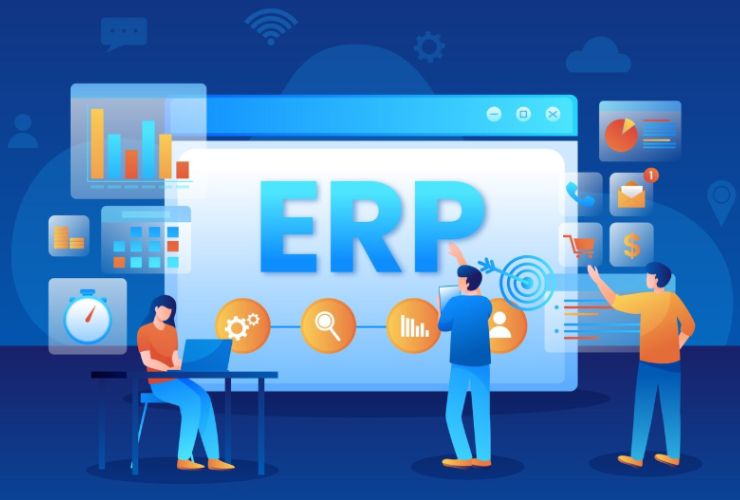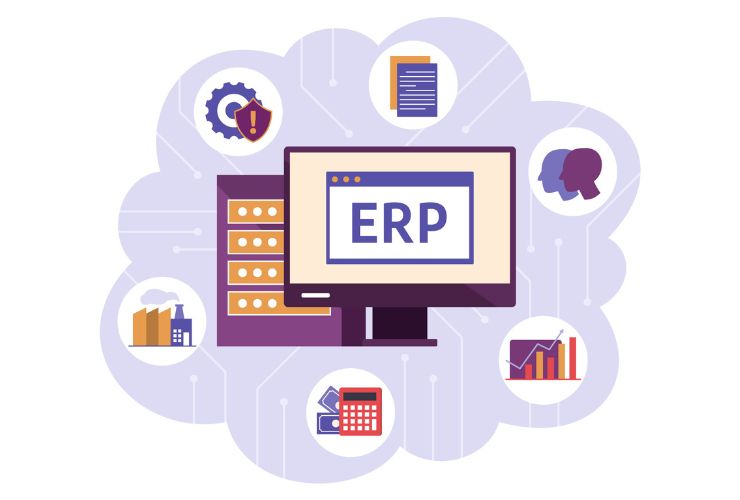As businesses expand, so do their operations. So do the software applications they use to manage them. To stay in the game, companies will spend money on every kind of industry-specific software — CRMs to manage customer relationships, accounting suites for financials, inventory control programs for warehouses, HR tools for staff, etc. Even though every bit of software is precious on its own, managing them individually causes issues that are much larger than the solutions themselves. This is where ERP integration becomes essential — it connects these systems, ensuring smooth data flow, process automation, and a unified operational view.
When systems don’t communicate with one another, workers work twice as hard, managers are out of reach, and decisions suffer. That’s where ERP integration comes in. ERP integration brings all your software applications together with your Enterprise Resource Planning (ERP) core system, ensuring easy flow of data, real-time updates, and automation across every business function.
But how do you know whether your business actually needs ERP integration? Let’s explore the five big red flags.
1. Your Teams Rely Heavily on Manual Data Entry
One of the oldest and most apparent signals of a broken system is the repeated input of the same data into various platforms. For example, a sales team may input customer data in a CRM, with the operations team re-inputting the same information into the ERP or shipping software.
This manual data handling not only takes time but also increases the risk of mistakes — an incorrect address or stale invoice can quickly disrupt operations, hold up shipments, or be a source of customer dissatisfaction.
ERP integration eliminates the redundancy of data entry. When an update is performed in a system — for example, a new customer order, a return of product, or an updated invoice — the information feeds automatically into all involved systems. Not only does this reduce time, but it also enhances data accuracy and the productivity of employees quite a great deal.
2. You Don’t Have Real-Time Visibility Across Departments
In an integrated environment, decision-makers need to be able to see what’s happening in each department at any given time. But in most organizations, every team is operating in its own silo, so it’s hard to get a complete, real-time picture.
For example, a finance manager might not see the status of orders, or a warehouse crew might not be aware of impending promotions. This disconnect results in delays, miscommunication, and poorly informed strategic planning.
With ERP integrated, data is centralized and available in real time. Sales, inventory, customer service, and finance personnel all work from a single dataset — ending miscommunication and enabling faster, smarter decision-making.
3. Isolated Systems are Slowing Down Your Workflows
If business systems do not communicate with each other, your workflows grind to a halt. Your employees waste time switching between applications, reconciling information manually, and waiting for updates from other departments. These inefficiencies all add up over time, creating slower productivity and the pace of operations.
For example, a delay in synchronizing order details between your e-commerce platform and inventory system could result in overselling or lost fulfillment. Similarly, month-end close may take days longer without automated financial reconciliations.
ERP integration smooth out these workflow interruptions by enabling automatic data exchange between systems. Integrated, your applications exist in harmony, enabling teams to move more rapidly, serve customers better, and respond to changes in real-time.
4. Reporting Takes Too Long — and You Don’t Believe the Numbers
Accurate and timely reporting is essential to business planning and measuring performance. But if you’ve got numbers spread across multiple different systems, reporting takes time. Teams spend hours gathering numbers, verifying numbers, and rebuilding spreadsheets — then questioning the final output.
Bad decisions, missed opportunities, and miscalculations result from old or wrong data.
Integrated ERP solutions provide real-time, uniform reporting. They consolidate data from across your business into dashboards and reports that illustrate minute-by-minute data. If you need to forecast inventory, track KPIs, or deliver fiscal summaries, ERP integration ensures the information you use to make informed decisions with is current and accessible.
5. Your Business Has a Hard Time Growing
Growth is the goal of nearly every business. But when your systems aren’t integrated, growth becomes a grudge rather than an accomplishment. When more transactions take place, product lines expand, or new channels to market are opened up, disparate systems become more and more stressed. Employees spend more time troubleshooting, and processes begin to creak at the seams.
Without integration, you scale by throwing more bodies at the problem — hiring more people just to handle data entry or error correction.
With ERP integration, you scale not by headcount but by automation. As your business grows, integrated systems adjust dynamically, handling increased volume without additional manual intervention. You can introduce new tools, new locations, or new services without needing to replumb your back-end operations each time.
Conclusion
ERP integration is not a technical advantage anymore — it’s a business necessity. With the market becoming increasingly interlinked and competitive, companies need an integrated system that is capable of passing data, automating tasks, and offering real-time visibility into their business.
If you’ve noticed your business facing any of the five challenges above — repeated manual work, lack of visibility, slow workflows, unreliable reporting, or difficulty scaling — it’s time to consider ERP integration.
By creating a unified digital environment, ERP integration enhances efficiency, reduces risk, and prepares your organization for sustainable growth. Investing in integration today positions your business to operate smarter, scale faster, and serve customers better tomorrow.













